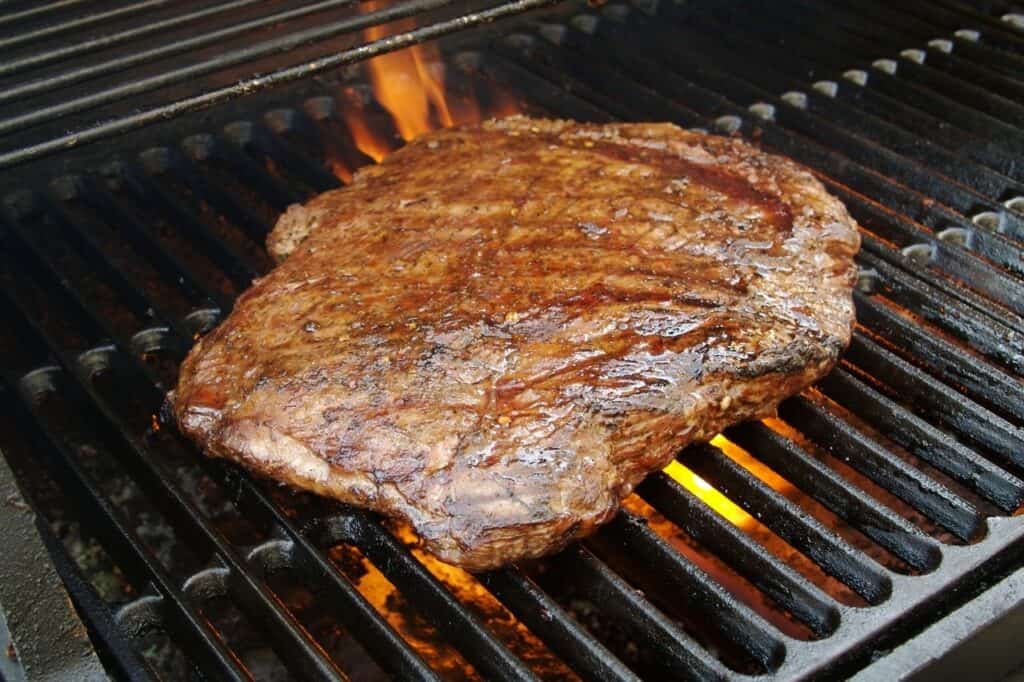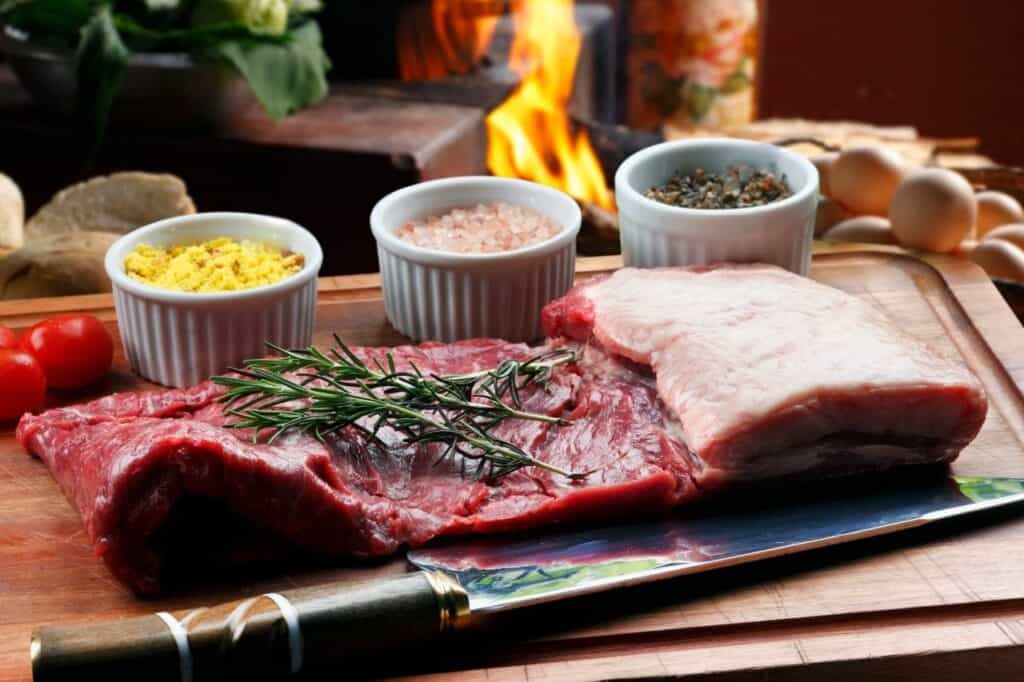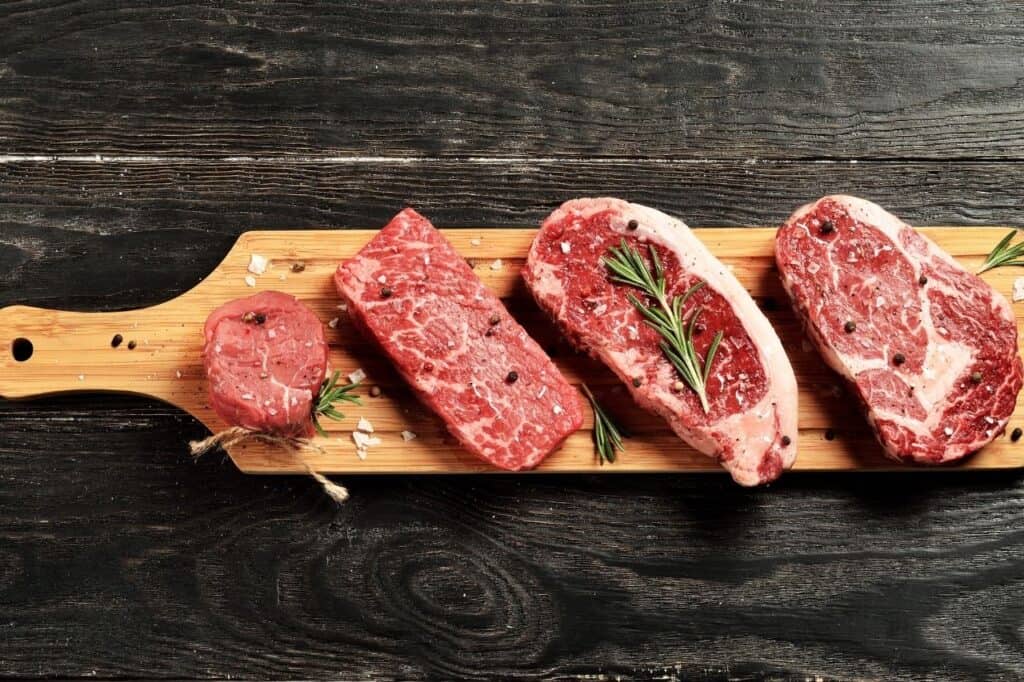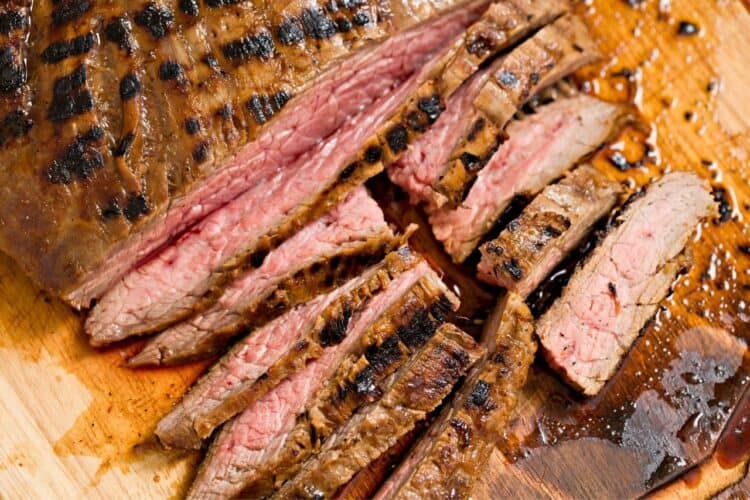When it comes to beef, it can sometimes be confusing which cut to use for steak. There’s ribeye, porterhouse, filet mignon, T-bone, and then there’s flank steak. The latter is oftentimes underappreciated but is actually a versatile steak that’s great for grilling and other types of meals.
Flank steak is a flavourful cut of beef found in the cow’s abdominal area, just below sirloin and loin. It is lean and tough as it’s one of the cow’s muscles that works a lot. A flank steak is easy to identify due to its visible thick and long muscle fibres.
While flank steaks can be tough, there are ways to make them tender depending on how you prepare them.
5 Things You Need To Know About Flank Steak
If you are not a fan or not that familiar with flank steak, here are some of the things you need to know about it that would make you appreciate it more.
1. It Is Known By Different Names
Similar to other cuts of meat, flank steak is also known by different names. London broil is what it is also commonly called in restaurant menus or grocery stores. However, some stores also use London Broil for top round cuts. If you don’t know how to differentiate a flank steak from a top round, it’s best to ask the store to be sure.
When you see a jiffy steak or flank steak fillet in the meat shop, it also just means flank steak. Since flank is used by many professional chefs and cooks around the world, in case you’ll be travelling in Spain, they call it Arrachera, and the French call them Bavette steak.
2. How To Identify It
As mentioned earlier, it has long thick strands of muscle fibres that run along the stretch of the meat. Compared to steaks such as ribeye or New York strip, it has a deeper colour of red. When purchasing one, make sure there are no brown discolouration or holes.
Having dark spots or discolouration means the meat is no longer fresh. Since it is lean meat, there should not be too much fat in it.
3. Cost
It is one of the cheapest cuts of meat and not considered as one of the top cuts of steaks like the ribeye and filet mignon. This is primarily because it is quite tough and a bit thin. But I often find myself grabbing a flank steak every time I go meat shopping because of its versatility. It’s my go-to cut whenever I’m craving some fajitas.
4. How Does It Taste?
Flank steak has a rich beefy flavour that can make any dish taste better as long as it is prepared properly. However, don’t expect to taste the fatty flavour commonly present on ribeyes, since flank steak is generally lean and has almost no fat at all.
But you can taste the beefy goodness in every bite. It is better when marinated, not only to add flavour but to help make it more tender.
5. Cooking Method
Flank steak is either cooked slow and long or fast and hot. Depending on what dish you are making, finding the right temperature will give you the best result.
How To Cook Flank Steak

Since it is a great addition to many dishes, there are several ways to cook flank steak using different cooking equipment. Most people marinade their flank steaks before cooking.
I would recommend this as it helps in tenderizing the meat and adding more flavour to them. However, don’t marinate it overnight. A couple of hours before cooking them will do.
Slow Cooking
Since flank steaks are tougher than most cuts, slow cooking is one of the best ways to cook them. There are so many dishes you can do by slow cooking them.
Some of my favourites are Mongolian beef and flank steak tacos. I also find slow cooking flank steak gives me the most tender result compared to other methods. I usually cook it for about 8 hours on my slow cooker.
Grilling
When grilling flank steak, I always marinate them for at least two hours before I set them on the griller. I tried grilling it without marinating and I was left with a rubbery and tough steak. It only takes me a total of 6 minutes to cook my grilled flank steak over medium flames; at least three minutes for each side.
Cooking On Stove
Another way to cook a flank steak is on the stove. I find using a cast-iron skillet as the best option when cooking on the stove because it can hold high temperatures better.
To get the best result, cook it on high heat but for a short period only. Spraying the pan with cooking spray or a little bit of oil will do the trick. To avoid having a chewy steak, medium rare is the way to go.
Cooking in the Oven
Cooking a flank steak in the oven can be tricky but I’ll share a simple trick to get the best out of your flank steak in an oven. One common mistake that most people make is forgetting to coat the beef with olive oil along with other spices before placing them inside the oven.
Forgetting to apply olive oil can make the meat dry. Place the steaks on the pan and cook one side for 5 minutes on high heat, and then about 3 to 4 minutes on the other side. Again, it should be medium-rare. Let the meat rest for at least 10 minutes before slicing or serving.
What Should Be Included in a Flank Steak Marinade?

Marinating flank steak before cooking is essential to tenderize it and create a significant flavour. What you put in your marinade can help improve its flavour and tenderness. Here are the flank steak marinade essentials you need to know.
Salt
Adding salt to your marinade can help make the meat juicier as it increases the meat’s moisture capacity. Salt helps hydrate muscle tissues and change the structure of the cells.
Olive Oil
Olive oil is a common marinade ingredient as it helps disperse the seasonings on the beef and make the spices stick on the meat. It also dissolves fat-soluble flavours from the spices and seasonings.
Brown Sugar
Adding sugar does not only add a bit of sweetness to the beef but also stabilises the acid and salt in the marinade. It can leave nice grill marks on the meat and makes it easier to create great brown colour.
Acid
Acidic seasonings such as lime or lemon juice, balsamic vinegar, and Worcestershire sauce can all help in tenderizing the flank steak. Putting them all together in your marinade gives the steak a tangy and rich flavour.
Flavour Enhancers
You can use almost any herb or spice that you prefer. However, I love using paprika, onion powder, and to throw in some dried herbs like rosemary, oregano, and basil.
How to Store Flank Steak
Proper storage is important to help keep raw and cooked food fresh and to last longer. Meat in particular can easily lose its freshness and quality when exposed out in the air for too long.
As much as possible, purchase meat the same day or at least a day before cooking it. This isn’t possible for most people due to their busy schedules. So, here’s how you can properly store your flank steaks.
Raw Flank Steak
Raw flank steak can be kept in the refrigerator for up to three days as long as it is wrapped in its original packaging or butcher paper.
Supermarket packaging, also known as modified atmosphere packaging, can help preserve the meat since it has carbon dioxide. When storing uncooked flank in a freezer bag, be sure to remove any excess air before storing it.
Cooked Flank Steak
Cooked flank steak can be stored in the fridge for about 5 days, provided that it is kept in an airtight container.
You can also keep your flank steak frozen. It can be kept for at least 12 months in the freezer as long as it is in its original packaging. To prolong its shelf life, vacuum seal it before storing it in the freezer. Doing this will also prevent freezer burn.
Related Questions

Some of the good substitutes for flank steaks are top round, skirt steak, hanger steak, flat iron, flap, and tri top steak. There are also some non-beef flank steak alternatives you can try such as chicken breast, tofu, mushroom, and vegetable steaks.
Flank steak comes from the bottom abdominal area of the cow. It has a lot of hard fibres and is quite lean. When it comes to flavour, flank steak has a very powerful beef flavour and it can be a little tough to eat so you should slice it very thinly. The best way to cook it is through high heat and quick cooking.
On the other hand, skirt steak comes from the diaphragm muscles of the cow and has a lot of tough fibres, too. It has a more intense beef flavour and is much tougher than flank steak. If you want to add a tender texture to it, you must cook it rare or medium-rare. Searing, grilling, or stir frying over high temperature are just some of the best ways to cook a skirt flank.
- Does Using Pellet Smokers Dry Out Meat? – Myth or Fact - January 4, 2022
- 12 Best Meats To Cook On A Pellet Smoker - December 30, 2021
- Dry Brining: What, How, Why & More - December 28, 2021


